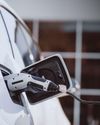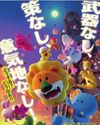CATEGORIES
Kategorier
Nyste historier

UTAH BECOMES THE FIRST STATE TO PASS LEGISLATION REQUIRING APP STORES TO VERIFY AGES
Utah on Wednesday became the first state to pass legislation requiring app stores to verify users’ ages and get parental consent for minors to download apps to their devices.

WHAT TO KNOW ABOUT BUYING AN EV IN 2025
Car shoppers considering buying an electric vehicle in 2025 will have more factors to consider than buyers in previous years.

NASA'S TWO STUCK ASTRONAUTS ARE FINALLY CLOSING IN ON THEIR RETURN TO EARTH AFTER 9 MONTHS IN SPACE
NASA’s two stuck astronauts are just a few weeks away from finally returning to Earth after nine months in space.

ANGRY BIRDS.FROGGER AND OTHERS ARE FINALISTS FOR THE WORLD VIDEO GAME HALL OF FAME
The 2025 finalists are: Age of Empires, Angry Birds, Call of Duty 4: Modern Warfare, Defender, Frogger, Golden Eye, Golden Tee, Harvest Moon, Mattel Football, Quake, NBA 2K and Tamagotchi.

ANIMAL SHAPES TURN CUSTOMERS INTO FANS
The daily victories in our lives aren't punctuated with ceremony or fanfare; rather, they are acknowledged with small rewards and simple pleasures. Sweets typify the prize for these small triumphs with a moment of delight that compliments the sense of accomplishment. Ginbis Co., Ltd., are a manufacturer of sweets that company President Shuji Miyamoto says delivers joy and vitality to people around the world. “We want to be known as a company that delivers sweets that are memorable in one’s lifetime,” he says.

Inside William's Private World
In a new interview, Prince William’s former right-hand man reveals what the future king is really like behind the scenes

SELLECK BLOOD FEUD OVER DONNIE'S BETRAYAL!
Protégé Wahlberg steals show from under Tom's nose

We Love LUCY'S STYLE
THE LOOK OF TELEVISION'S COMEDY QUEEN EVOLVED OVER TIME

JOSH & HAILEE Full Speed Ahead
Now that the Buffalo Bills quarterback's season is over, the duo is focused on wedding planning

RELEASED KILLER CANNIBAL HUNGRY FOR FREEDOM!
Shocking decision lets him out after 12 yrs in loony bin

OBAMA'S SECRET LOVER SPILLS BARACK'S BEANS!
Sex details drive Michelle mad as marriage founders

FLYING THE UNFRIENDLY SKIES AFTER DISASTER!
Here’s why air travel is still a safe bet

Paul W.S.Anderson & Milla Jovovich
On the eve of their ninth film, In the Lost Lands, the spouses talk working together, the \"electricity\" of their first meeting... and that black eye she gave him

25 THINGS YOU DON'T KNOW ABOUT ME
The actress divulges some personal truths, including how Minnie Driver once supported her on set!

Moving On From the Mayhem
It's back to business for The Rookie's Jenna Dewan on-screen and on the set

GRIFFIN DUNNE Just SAY YES
The This Is Us alum shares his thoughts on taking chances and his new film projects

Gypsy-Rose Blanchard and Ken Urker Talk Parenthood and Marriage Goals
Ahead of the season 2 premiere of their Lifetime reality series Life After Lockup on March 10, the famed Munchausen syndrome by proxy victim, 33, and her boyfriend, 32, discuss life as new parents to 2-month-old daughter Aurora.

Mickey 17 IN THEATERS
Robert Pattinson costars with—Robert Pattinson!—in a futuristic epic about clones

HANSEL ENMANUEL Making It Look Easy
THE COLLEGE BASKETBALL SENSATION LOST MOST OF HIS LEFT ARM IN AN ACCIDENT 16 YEARS AGO. NOW HE HAS MILLIONS OF FANS AND NBA DREAMS

Chickpea Curry With Coconut Rice
You can get a curry almost anywhere in the world, but this flavor profile is very Caribbean-focused.

A Spark Gone Too Soon
THE FORMER CHILD STAR'S FRIENDS GIVE INSIGHT INTO THE FINAL DAYS BEFORE HER SHOCKING DEATH AT 39 AND HIGHLIGHT HER LEGACY: SHE 'TOUCHED A GENERATION'

JUSTIN & HAILEY CAN'T MAKE A MOVE WITHOUT SHRINK!
Need couples therapy to navigate rapids

Jessie James Decker 'I Like the Way ILook Now
More Than When I Was 23' Hot mama! Jessie James Decker dishes on getting into peak physical shape, her new swimsuit collection and life as a family of six

KIM'S SEXY GAME PLAN FOR PETE!
HOT-TO-TROT Kim Kardashian is thrilled to have reconnected with ex-love Pete Davidson at the SNL 50th anniversary party, and sources say that even if the comic is not up for another full-blown romance, the Skims hawker is pushing for the next best thing - a no-strings booty-call setup!

ANGIE'S KIDS FATTEN HER UP!
Worried she's wasting away

LINDSAY'S DAD CUFFED IN ATTACK ON EX-WIFE!
FREAKY father Michael Lohan has been collared for allegedly assaulting his estranged wife, Kate Major.

IT'S BIGFOOT vs GRIZZLY IN CALIFORNIA!
Lawman proposes mythical monster as new mascot

I Always Wanted To Play This Role
How the TV legend overcame his reservations about returning to the small screen for his new show

VANNA HAS NO TIME FOR LOVE!
LEGGY letter-turner Vanna White is putting romance on the back burner as she spins about the changes on Wheel of Fortune - and her soaring stress isn't helping the game show gal's relationship with devoted beau John Donaldson, sources snitch.

GOSSIP GIRL STAR'S Tragic Death
Hollywood was left reeling after Michelle Trachtenberg was found dead at the age of 39 at her NYC apartment on Feb. 26.
